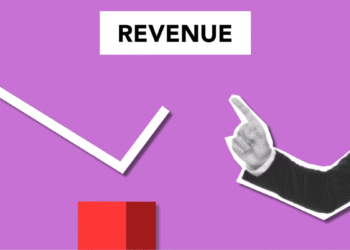The Direct-to-Consumer fashion world? It’s changing faster than my closet during spring cleaning.
I’ve been watching this space for a while, not just because I love a good basics brand, but because the way these companies operate is seriously impressive.
There used to be a time when launching a fashion brand meant playing by everyone else’s rules—wholesalers, department stores, all the middlemen. Not anymore. DTC brands have totally flipped that model, building direct connections with customers and shaking things up. And let me tell you, some of the trends and success stories out there right now are worth paying attention to.
Whether you’re running a small shop or dreaming of starting one, here are seven trends and wins from the DTC fashion scene that I think you’ll really want to know about.
1. Sustainability is finally real
It’s not just about saying “we care about the planet” and tossing that into a footer. Today’s shoppers, especially Gen Z, want proof. They’re asking how products are made, what fabrics are used, and if the brand actually walks the walk.
I’ve seen brands like Pangaia and Reformation do this really well. They show water savings, energy usage, and even product-specific emissions. Some sites even have little calculators so you can see the impact of buying one item over another. Pretty cool.
If you’re starting your own line, don’t worry about being perfect. Just be specific. Say your shirts are made from organic cotton or that your mailers are compostable. That kind of honesty goes a long way.
2. TikTok and social-first content are taking over
It’s wild how fast a brand can blow up on TikTok these days. DTC brands aren’t just selling stuff anymore—they’re creating personalities, stories, and experiences around their products.
I remember when Aerie’s unfiltered campaign took off. It featured real people instead of models and just felt genuine. Or SKIMS—they’re constantly trending with try-ons, behind-the-scenes stuff, and body-positive messaging. It’s not polished content, but it connects.
If you’re just getting started, don’t overthink it. Some of the best-performing videos are quick, messy, and honest. Just show your product, your story, or even a packaging process. People love that stuff.
3. Limited drops are creating serious hype
There’s something about scarcity that makes people lose their minds. When a brand says they’re dropping a new collection for one day only, or there’s a limited quantity—it works.
Noah NYC and Fear of God Essentials are great at this. I’ve literally watched people set alarms for a drop and then complain when the site crashes from all the traffic. It builds urgency and demand like nothing else.
You don’t need to launch a huge collection. Try a small capsule release with a countdown timer and build the hype ahead of time. It keeps your audience excited and coming back for more.
4. Try-before-you-buy is catching on
This one surprised me at first, but now it just makes sense. When you’re buying clothes online, it’s hard to know if something will fit right or feel good. That’s why more brands are offering try-before-you-buy programs.
Think Warby Parker or Amazon Prime Wardrobe. It lowers the risk for the customer and boosts confidence in buying. I tested it out on my site once with a 7-day trial program, and my return rates actually dropped. People were more intentional about what they kept.
Even if you can’t offer it for every item, try it with your bestsellers or higher-ticket pieces. You might be surprised how much trust it builds.
5. Personalization is driving more conversions
Have you ever visited a site and felt like it already knew your style? That’s not an accident. Brands like Stitch Fix and True Classic use data to personalize everything—from size suggestions to outfit pairings.
They gather info through quizzes, past orders, and browsing habits. Then they use it to make recommendations that actually make sense. I once ended up buying three extra items just because the site showed me combos I wouldn’t have picked myself.
You don’t need a huge team or budget for this either. Tools like Klaviyo or Octane AI make it easy to get started, even if you’re just running a solo shop.
6. Founder stories are making big impact
I’ve noticed a huge trend lately—people are connecting with the people behind the brand more than the products themselves. When founders share their journey, their struggles, or why they started, it just hits different.
I heard one founder on a podcast talk about burnout and creativity, and I bought something from her brand the next day. Not because of the clothes, but because I felt connected to her story.
If you’re launching or growing a brand, don’t be afraid to show your face. Post about your process, your mission, even the failures. That realness builds loyalty like nothing else.
7. Brands are building community, not just customers
The best DTC brands right now aren’t just focused on selling—they’re building real communities. Glossier did it early by involving their customers in product development. Parade features real customers in their marketing. And Lululemon hosts events and ambassador meetups.
I’ve joined small Facebook groups for fashion brands that feel like little clubs. People share styling tips, feedback, and sometimes even help each other with orders. It’s way more engaging than a newsletter.
You don’t need a big team to build community. Start small. Feature a customer of the month, share UGC (user-generated content), or just reply to comments with genuine interest. People remember how you made them feel.
Final thoughts
The DTC fashion world isn’t slowing down anytime soon. From sustainable sourcing and viral videos to limited-edition drops and personalized shopping—these trends are shaping what success looks like now.
If you’re diving into this space or already in it, keep watching what works—but don’t be afraid to add your own twist. Authenticity, connection, and creativity? That’s what’s driving the biggest wins in DTC today.








